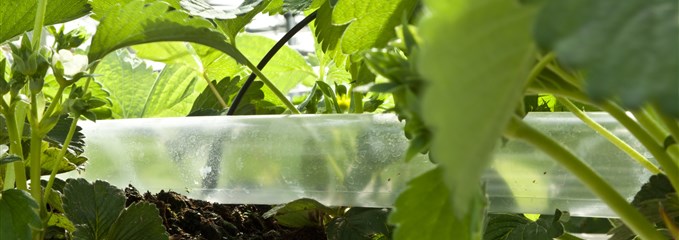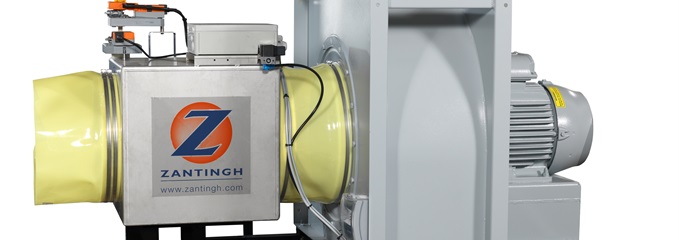

.jpg)
Dosing CO2
16-05-2019Plants need light and CO2 for photosynthesis to take place. Lower CO2 levels have a negative effect on the quality of the plants and therefore, the crop. In many cases the flue gas from gas-fired boilers or cogeneration units is used to increase the CO2 level in greenhouses. Liquid CO2 in combination with flue gas or not can also be added to increase the level of CO2. CO2 fans and distribution pipes between the plants are required to transport the CO2-rich transported volume to the greenhouses. Distributing the CO2 as evenly as possible throughout the greenhouse is key. The CO2 system design must therefore be based on calculations that take many factors into account.
Effect on the design
The transported volume, for instance, depends on the source. The flue gas volume of a cubic metre of natural gas combusted in a gas burner differs from the volume produced by a cogeneration unit. The cogeneration unit produces a higher quantity of surplus air, which means the volume transported has to increase to produce the same nominal CO2 dose, which requires pipes with a higher diameter.
The greenhouse design also plays an important part when determining the distribution pipes. The obvious factor that is important is the cultivation surface area with the corresponding distances to be covered, but also oblique angles that require more bends, represent an increasing loss of pressure in the pipes and require more powerful fans.
Greenhouses abroad are often built at an altitude. For example, in Mexico greenhouses are built up to 2.5 km above sea level. At altitudes, the air pressure is lower. This means that there is less oxygen per cubic metre of air. More air is therefore required to combust the same quantity of natural gas. The larger volume has to be taken into account when calculating the piping dimensions.
Proprietary software
Calculating the appropriate piping dimensions is always project specific. Zantingh has developed its own software for this task. When calculating the piping dimensions, a drawing of the greenhouse area is used as the starting point. Preferably an AutoCAD file to ensure the dimensions are known. The appropriate principles are also required. The plants to be cultivated and the corresponding dosing norm are also important. We also ask whether the customer has a preferred pipe layout for the greenhouse, for example, along the centre path or the walls. When the customer does not have a preference, we select the option that we believe is best. Nowadays, pipes are often buried. Piping should slope downwards in this case to ensure the condensation included in the flue gas is discharged appropriately. Special drains and discharge pumps are used for this.
The dosing norm is expressed in cubic metres of natural gas per hectare of greenhouse area per hour when flue gas is used. When using liquid CO2, the air volume required to transfer the CO2 to the greenhouse is taken as the starting point for the calculation. Combining liquid CO2 and flue gas is also an option.
Zantingh only installs high-efficiency fans that can be equipped with frequency-controlled motors if required. A high-efficiency CO2 fan ensures the best possible performance (flow and pressure) while the consumption of energy is the lowest possible. In many cases, this means we can install smaller motor capacities and narrower pipe diameters, which result in significantly lower costs.
Visit the Zantingh stand at GreenTech Amsterdam at stand 12.316 for further information on our CO2 systems and calculations.
































